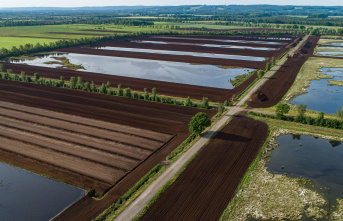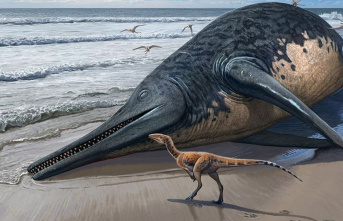Measuring stations that monitor air quality around the world could make a decisive contribution to documenting the state of global biodiversity. A study by Canadian and British researchers shows that the air samples contain environmental DNA (eDNA) from animals and plants - and thus a "treasure trove" of previously hidden data on biodiversity.
In addition to the climate crisis, the loss of biodiversity is one of the greatest planetary challenges, as emphasized by the UN Conference on the Protection of Biological Diversity in December. But this decline is difficult to quantify. "The problem that is often cited is that the infrastructure required for global surveillance is not available," explains the research team in the journal "Current Biology" - and challenges this claim with their study.
Huge and hitherto untapped source
In fact, there is already a global network that could provide information on the development and status of biodiversity, writes the team, referring to the measuring stations for monitoring air quality. "These nets have been around for decades, but we haven't really considered the ecological value of the samples they collect," said Elizabeth Clare of York University Toronto in a statement.
These networks are a huge and previously untapped source of biodiversity data, adds Andrew Brown from the National Physical Laboratory (NPL) in Teddington, UK. The approach was inspired by two previous studies that showed, for example, that species in zoos can be identified using air samples.
This gave Brown and colleagues the idea of using air quality monitoring stations to look for eDNA. The researchers have now extracted and analyzed this environmental DNA from two monitoring stations in London and Scotland.
"Could prove to be an absolute game changer"
"We found eDNA evidence for more than 180 different plants and animals at just two sites," says biologist Clare. The list therefore included animals such as badgers, dormice, hedgehogs and smooth newts, trees such as ash, lime, pine, willow and oak, and plants such as yarrow, mallow and daisies. The team also found genetic material from 34 bird species.
For first author Joanne Littlefair from Queen Mary University of London, the data hold enormous potential: "This could prove to be an absolute turning point for the recording and monitoring of biological diversity." Almost every country has an air pollution monitoring network. In Germany, too, hundreds of measuring stations check the air quality every day.
"This could solve a global problem of how to measure biodiversity on a large scale," Littlefair said. In addition, samples are sometimes stored for decades, so that retrospectives on the development of biodiversity would also be possible. A global effort is now needed to exploit the information it contains, as well as a standardized protocol for collecting new data.
Also a question of data protection
The scientists do not mention possible ethical or data protection aspects. This was recently confirmed in a study in the journal "Nature Ecology
"In most cases, the quality is almost as good as taking a sample from a human being," said University of Florida author David Duffy. It is therefore necessary to weigh up the possible benefits of eDNA tests and data protection.












